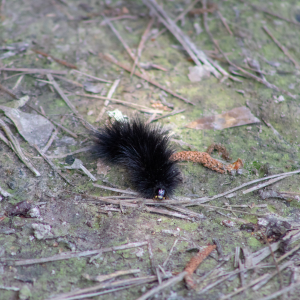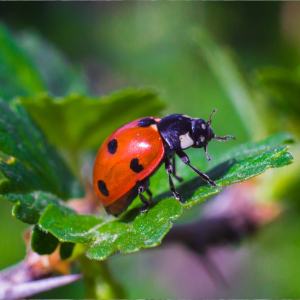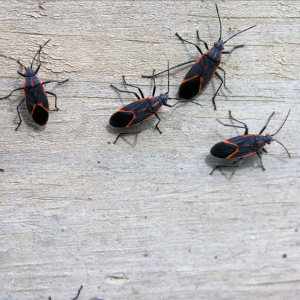


When winter descends on the Midwest, it brings biting cold, icy winds, and freezing temperatures. While we bundle up in layers and retreat indoors, insects must rely on ingenious adaptations to survive. Their remarkable survival strategies often go unnoticed but become all too apparent when some of these resourceful creatures find their way into homes.
Understanding how insects endure the brutal cold not only highlights the resilience of nature but also underscores why proactive pest control is essential during the winter months. If you’ve ever wondered where insects go when the ground freezes solid, keep reading—and discover how STL Pest Control can help keep them out of your home.
The Harsh Reality of Midwest Winters for Insects
Insects face two major challenges during winter: the risk of freezing and the scarcity of food. Most insects are cold-blooded, meaning their body temperature fluctuates with the environment. When temperatures drop, their metabolism slows dramatically, making movement, foraging, and escape from predators nearly impossible.
To survive, insects employ one of three primary strategies: migration, hibernation, or physiological adaptations to resist freezing. These tactics are critical for their survival, and understanding them reveals just how complex and resourceful these creatures can be.
How Midwest Insects Survive the Freeze
Migration: The Great Escape
Some insects, like the iconic monarch butterfly, avoid the winter freeze entirely. Monarchs undertake an incredible migration, traveling thousands of miles from the Midwest to warmer climates in Mexico. This journey ensures their survival, but it’s fraught with challenges, including habitat loss and changing climate patterns.
Migration isn’t a solution for most insects, though. For the vast majority, survival means staying put and braving the cold.
Hibernation: Hunkering Down for the Season
Many insects survive winter by entering a dormant state called diapause, a form of hibernation. During diapause, metabolic activity slows to a crawl, allowing the insect to conserve energy and survive for months without food.
- Ladybugs are well-known for this behavior. They cluster together in large groups under bark, inside logs, or even in the corners of homes to stay warm and wait out the cold months.
- Ants retreat deep into their underground colonies, often below the frost line, where the soil provides insulation against freezing temperatures.
- Boxelder bugs and stink bugs frequently use homes as their winter shelters, sneaking in through cracks, vents, and gaps around doors and windows.
Biological Adaptations: Surviving the Freeze from Within
For insects that remain outdoors, surviving freezing temperatures often requires physiological adaptations. Some have evolved the ability to produce cryoprotectants—natural antifreeze compounds like glycerol—that prevent ice crystals from forming in their cells.
- The woolly bear caterpillar, for example, can survive being completely frozen. Its body produces glycerol, allowing it to endure temperatures well below freezing until spring.
- Snow fleas, a type of springtail, remain active even on snow-covered ground. Their antifreeze proteins keep them from freezing, enabling them to move and feed during winter.
Why Insects Find Their Way Indoors
Despite these remarkable adaptations, some insects see human homes as the perfect winter retreat. Warmth, shelter, and the absence of predators make your house an attractive haven for pests.
- Cockroaches and stink bugs are notorious winter invaders, often hiding in basements, attics, or wall voids.
- Spiders, although not technically insects, also move indoors seeking warmth.
- Ladybugs, while less harmful, can become a nuisance when they gather in large numbers indoors.
Once inside, these pests can reproduce, create unsanitary conditions, and in some cases, cause structural damage to your home.
The Importance of Winter Pest Control
While insects play a vital role in the environment, their presence inside your home can create significant problems. Winter pest control isn’t just about removing pests—it’s about preventing infestations before they start. Sealing entry points, eliminating attractants, and addressing existing pests are crucial steps to protect your home and maintain peace of mind.
STL Pest Control specializes in helping Midwest homeowners deal with winter pests. Our comprehensive approach ensures your home stays protected throughout the season.
How STL Pest Control Can Help
When it comes to winter pest control, STL Pest Control offers expertise and solutions tailored to your needs. Here’s how we can help:
-
Thorough Inspections
We identify potential entry points and assess your home for signs of pest activity. Common areas of concern include vents, chimneys, windows, and gaps in the foundation. -
Preventative Exclusion
By sealing cracks, repairing screens, and addressing vulnerabilities, we ensure pests can’t sneak inside. -
Targeted Treatments
Our eco-friendly solutions eliminate existing infestations while protecting your family and pets. -
Ongoing Protection Plans
Stay pest-free year-round with our customized protection plans, designed to address seasonal pest challenges.
Winter Pests and Their Impact
Ignoring winter pest control can lead to larger problems come spring. Many pests that survive winter indoors begin reproducing as soon as temperatures rise, leading to significant infestations. Taking action during the winter months not only protects your home but also reduces the risk of dealing with larger pest problems later.
Call STL Pest Control Today
Don’t let insects use your home as their winter sanctuary. With STL Pest Control, you can enjoy a warm, cozy home without unwelcome guests. Our team of experts is here to protect your space, providing fast, reliable service tailored to your needs.
Whether you’ve noticed pests already or want to pest-proof your home, we’re here to help. Call STL Pest Control today and let us keep your home safe, comfortable, and pest-free this winter.

